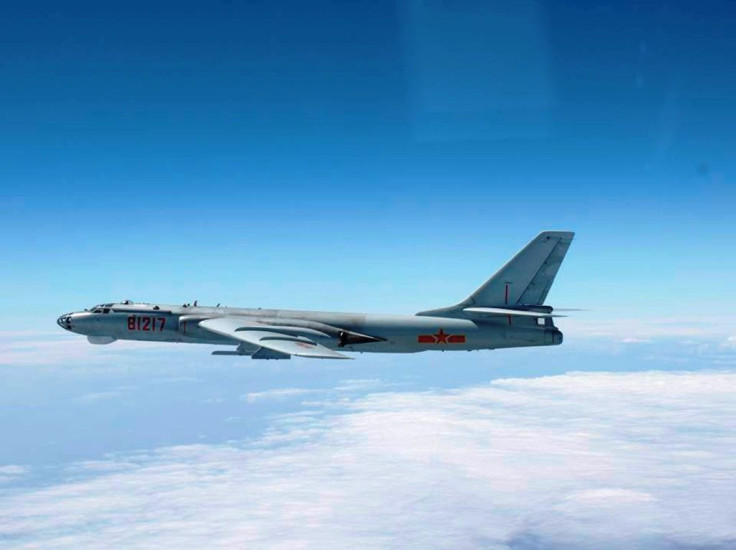China-Japan Relations: Beijing Slams Tokyo For Scrambling Fighter Jets, Calls Move ‘Dangerous And Unprofessional’

Chinese and Japanese military aircraft had a tense encounter Saturday, with the latter scrambling its fighter jets after six Chinese warplanes passed through the Miyako Strait — located between Japan's Miyako and Okinawa islands. Beijing slammed Tokyo for the move, calling it “dangerous and unprofessional.”
Two Su-30 fighters, two H-6 bombers, one Tu-154 surveillance plane and one Y-8 surveillance plane from China flew through the strategically important Miyako Strait, according to Japanese defense ministry’s Joint Staff Office. While the Su-30 fighters passed through the strait and turned back to head toward the East China Sea, the surveillance planes and bombers went toward the Bashi Channel near south of Taiwan, the Japan Times reported Sunday.
According to the Chinese defense ministry, its aircraft were performing “routine training in the Western Pacific” when two F-15 fighter jets belonging to Japan’s Self-Defense Force shadowed the planes. The ministry further said its warplanes were in international airspace at the time of the encounter.
Senior Col. Yang Yujun, the ministry’s spokesman, said in a statement Saturday the Japanese fighter jets came in close range of the Chinese warplanes and “even launched jamming shells, which endangered the safety of Chinese aircraft and crew.” Japanese military’s actions “destroyed the freedom of navigation and over-flight endowed by international laws,” he added.
However, the Japanese defense ministry called the Chinese account “factually inaccurate.” It further said its jets scrambled against Beijing’s planes to prevent violation of Japanese airspace and the move adhered to international law, Jiji Press reported. However, violation of Japanese airspace did not occur, according to Japanese media.
China’s military exercises Saturday lasted about four hours, reports said quoting Taiwan’s defense ministry. They were the first such drills since a telephone call between Taiwan’s leader Tsai Ing-wen and U.S. President-elect Donald Trump angered China, which has become more assertive in the western Pacific and South China Sea in recent years.
China’s state-run Global Times published an op-ed Sunday warning Japan it would have to bear the fallout, if any, from the Miyako Strait incident.
“… The tension over the East China Sea has astonished us all. It seems that Beijing and Tokyo are only one step away from an aerial exchange of fire … Tokyo has been boosting its military forces on both sides of the Miyako Strait, including deploying missiles aimed at passing Chinese warships,” the op-ed read.
“Given China’s strength in the air, much stronger than that of Japan, Tokyo won’t gain anything from conflicts with Beijing. In terms of crisis prevention and crisis control, the current mechanism between China and Japan is much worse than that between China and the U.S.,” Global Times added.
Beijing has performed similar drills in the western Pacific since September. Both Beijing and Tokyo have been involved in territorial disputes in the East China Sea. Tensions between the two countries are over uninhabited islands which are administered by Japan and are also claimed by China.
© Copyright IBTimes 2024. All rights reserved.












